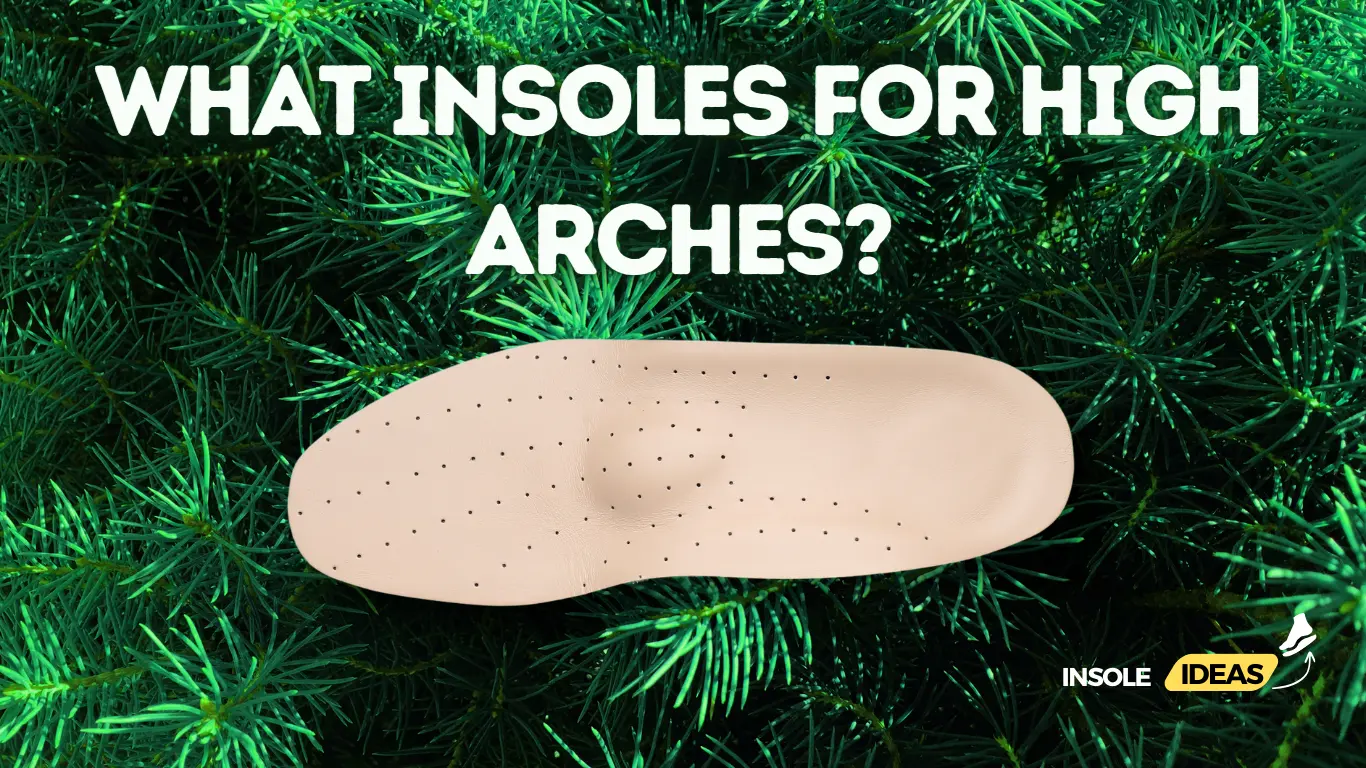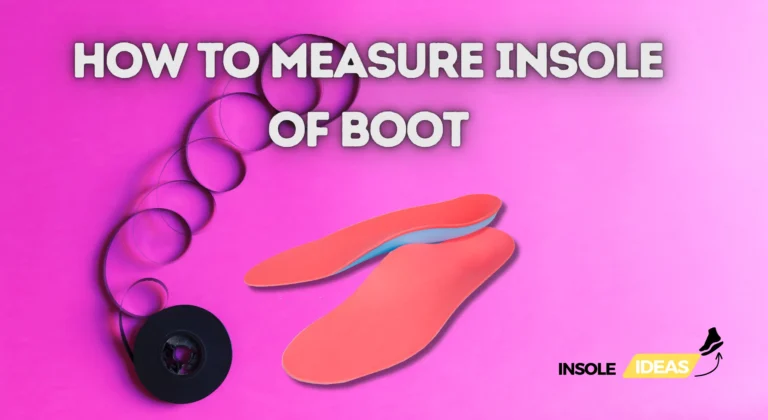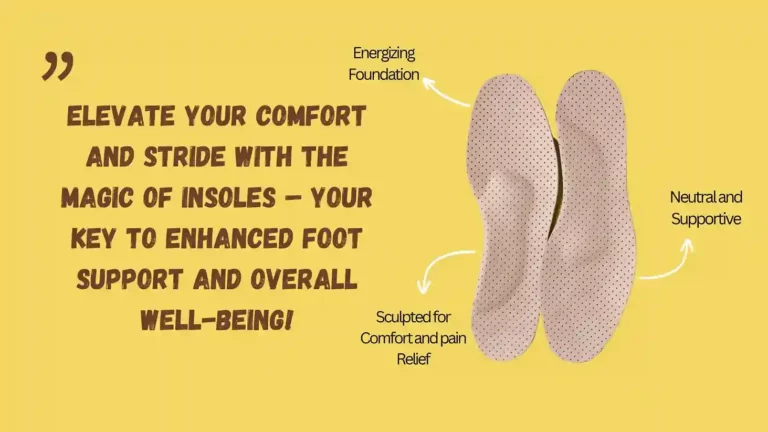what insoles for high arches? detail guide
High arches, medically known as pes cavus, refer to an arch of the foot raised more than usual. This condition can impact foot health and overall posture, leading to various issues such as instability, pain, and discomfort. It’s essential to understand the significance of choosing appropriate insoles for high arches to provide adequate support and alleviate related problems.
Individuals with high arches often experience difficulties finding comfortable footwear. They may be prone to conditions like plantar fasciitis, metatarsalgia, and stress fractures due to the uneven weight distribution on the feet. Therefore, selecting the right insoles tailored to high arches can significantly improve comfort, stability, and overall foot function.
Understanding High Arches
Definition and Characteristics of High Arches
High arches are characterized by an abnormally elevated arch along the inner part of the foot. Unlike flat feet, where the arch collapses, individuals with high arches have a more pronounced arch shape. This structural abnormality can affect the weight distribution on the feet, increasing pressure on specific areas.
Potential Causes and Factors Contributing to High Arches
Several factors can contribute to developing high arches, including genetics, neurological conditions, muscle imbalances, and foot injuries. In some cases, high arches may be inherited, while in others, they may result from underlying medical conditions such as cerebral palsy, Charcot-Marie-Tooth disease, or stroke.
Common Symptoms and Problems Associated with High Arches
Individuals with high arches may experience various symptoms and problems, including foot pain, particularly in the arch and heel and the balls of the feet. They may also have difficulty finding comfortable footwear that accommodates the shape of their feet and provides adequate support. Other issues may include instability, frequent ankle sprains, and calluses or corns due to increased pressure on specific foot areas. Understanding these symptoms and problems is crucial for effectively managing high arches and selecting appropriate insoles for support and comfort.
Importance of Insoles for High Arches
Individuals with high arches often require specialized insoles to address the unique biomechanical challenges associated with this foot condition. Unlike those with normal arches, individuals with high arches have less surface area of their feet in contact with the ground, leading to increased pressure on specific areas. Specialized insoles can help distribute weight more evenly, providing support and stability where needed most.
Explanation of why individuals with high arches may require specialized insoles
High arches alter the natural alignment of the feet, which can result in excessive strain on the arches, heels, and balls of the feet. This imbalance can lead to discomfort, fatigue, and even injuries. Specialized insoles for high arches are designed to provide targeted support and cushioning to alleviate pressure and promote proper foot alignment.
Benefits of using insoles to support high arches
Using insoles tailored to high arches offers several benefits. Firstly, they help distribute weight more evenly across the feet, reducing pressure on specific areas and minimizing discomfort. Additionally, insoles provide added cushioning and shock absorption, which can reduce the impact on the feet during walking, running, or standing for long periods. Moreover, by promoting proper foot alignment, insoles can help prevent overpronation or supination, leading to various foot and lower limb issues.
How insoles can alleviate pain and discomfort associated with high arches
Insoles for high arches are designed to address common symptoms such as arch pain, heel pain, and metatarsalgia (pain in the ball of the foot). They provide targeted support to the arches, helping to distribute pressure more evenly and reduce strain on the affected areas. Additionally, insoles with cushioning properties can absorb shock and impact, relieving discomfort during activities like walking or running. Specialized insoles can significantly alleviate pain and discomfort associated with high arches, allowing individuals to move more comfortably and confidently by providing adequate support and cushioning.
Tips for Using and Maintaining Insoles for High Arches
Using and maintaining insoles for high arches properly is essential to ensure optimal support, comfort, and longevity. Here are some tips to help you make the most out of your insoles:
Proper fitting and placement of insoles in shoes
When inserting insoles into your shoes, ensure they fit snugly and do not shift or slip during movement. Position the insoles to provide adequate support to the arches and cushioning to the heels and balls of the feet. Choosing shoes with removable insoles or enough space to accommodate additional inserts without causing discomfort or crowding is essential.
Advice for breaking in new insoles and adjusting to their support
New insoles may feel stiff or uncomfortable initially, especially if you’re not used to wearing supportive inserts. To break them in gradually, wear the insoles for short periods each day and gradually increase the duration as your feet adjust. It’s normal to experience some discomfort during the adjustment period, but consult a healthcare professional for guidance if you experience persistent pain or discomfort.
Maintenance tips to prolong the lifespan and effectiveness of insoles
To keep your insoles in optimal condition, follow these maintenance tips:
Clean insoles with mild soap and water to remove dirt, sweat, and odor.
Allow insoles to air dry thoroughly before reinserting them into shoes to prevent bacterial growth and odors.
Avoid exposing insoles to excessive heat or sunlight, as this can cause them to warp or degrade over time.
Inspect insoles regularly for signs of wear and tear, such as fraying edges or compression in cushioning.
Replace insoles as needed, typically every 6-12 months or when they no longer provide adequate support or comfort.
By following these tips, you can ensure your insoles continue to provide the support and comfort needed to alleviate pain and discomfort associated with high arches.
Conclusion
In conclusion, selecting the right insoles for high arches is crucial for promoting foot health and alleviating associated discomfort. By understanding the characteristics of high arches, identifying potential causes, and recognizing common symptoms and problems, individuals can make informed decisions when choosing insoles tailored to their needs. Additionally, using and maintaining insoles properly can prolong their lifespan and effectiveness, ensuring ongoing support and comfort. We encourage individuals with high arches to prioritize foot health by investing in appropriate insoles and following the tips outlined in this article. With the proper support and care, individuals can move comfortably and confidently, free from the pain and discomfort often associated with high arches.





